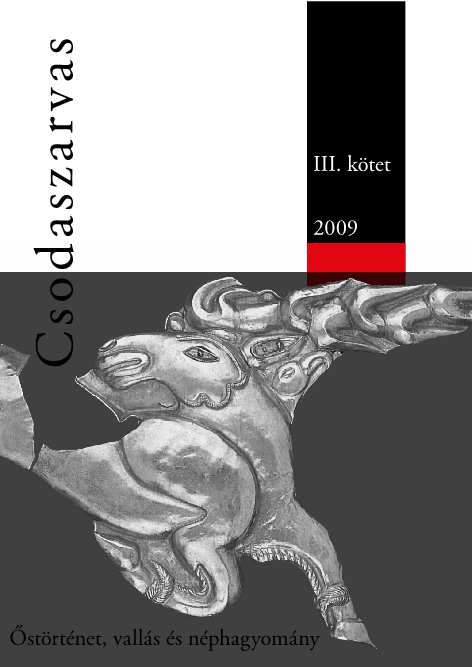A csudaszarvas
The ‘Wondrous Deer’: Historical Fiction or Legitimist Propaganda?
Author(s): Vilmos Voigt
Subject(s): Cultural history, Ancient World, Cultural Anthropology / Ethnology
Published by: Molnár Kiadó
Summary/Abstract: It was likely in early 1926 that Ernő P. Ábrahám's A csudaszarvas (That Wondrous Deer), an overview of Hungarian history for young readers, was published in Budapest. It starts with early Hungarian history (more precisely Hunnic-Hungarian history) and takes us all the way up to the situation after World War I. It is illustrated with Romantic tableaux that depict spectacular scenes witnessed by a young prince named Árva (a name which means "orphan"), who is whisked from one part to the next by his magic steed Tüzes (meaning "fiery"). The mythical csodaszarvas, or wonder deer, appears in several scenes, but it is signified in the book with the more folksy form csudaszarvas (roughly, "that wondrous deer"). The book is very richly decorated, with embellishments, initials and full-page illustrations that portray key scenes from Hungarian history. These were produced in the studio of a contemporary graphic artist, the multi-faceted and renowned Álmos Jaschik. And one of the age's most prominent Hungarian politicians, Albert Apponyi, wrote the foreword to the book. On carefully surveying this foreword as well as the body of the work and the illustrations, one discovers that the book serves a legitimist goal and that it was created for a "boy who lives far away," who received the first, hand-painted copy. This boy was actually the son of the last Habsburg king of Hungary, Charles IV, who had by then died; the heir presumptive to the throne was Prince Otto.
The article discusses the multi-layered and informative writing and iconography of the book as well as the author and the designer of the illustrations. A detailed study of both text and images brings out the several phases that went into planning and making the volume. Incidentally, the csudaszarvas variant in the title is well established in Hungarian literature and art. Interestingly, however, it is unknown among latter-day readers. It is revealing that the wonder deer not only shows the way to a new homeland, but also plays a role in the story of the founding of the church at Vác and brings the hero of the book all the way to the modern age.
A discussion of the many-sided text and of points about content and iconography is useful insofar as it reveals well-known stereotypes about both early and later Hungarian history.
Book: Csodaszarvas III.
- Page Range: 145-176
- Page Count: 32
- Publication Year: 2009
- Language: Hungarian
- Content File-PDF

